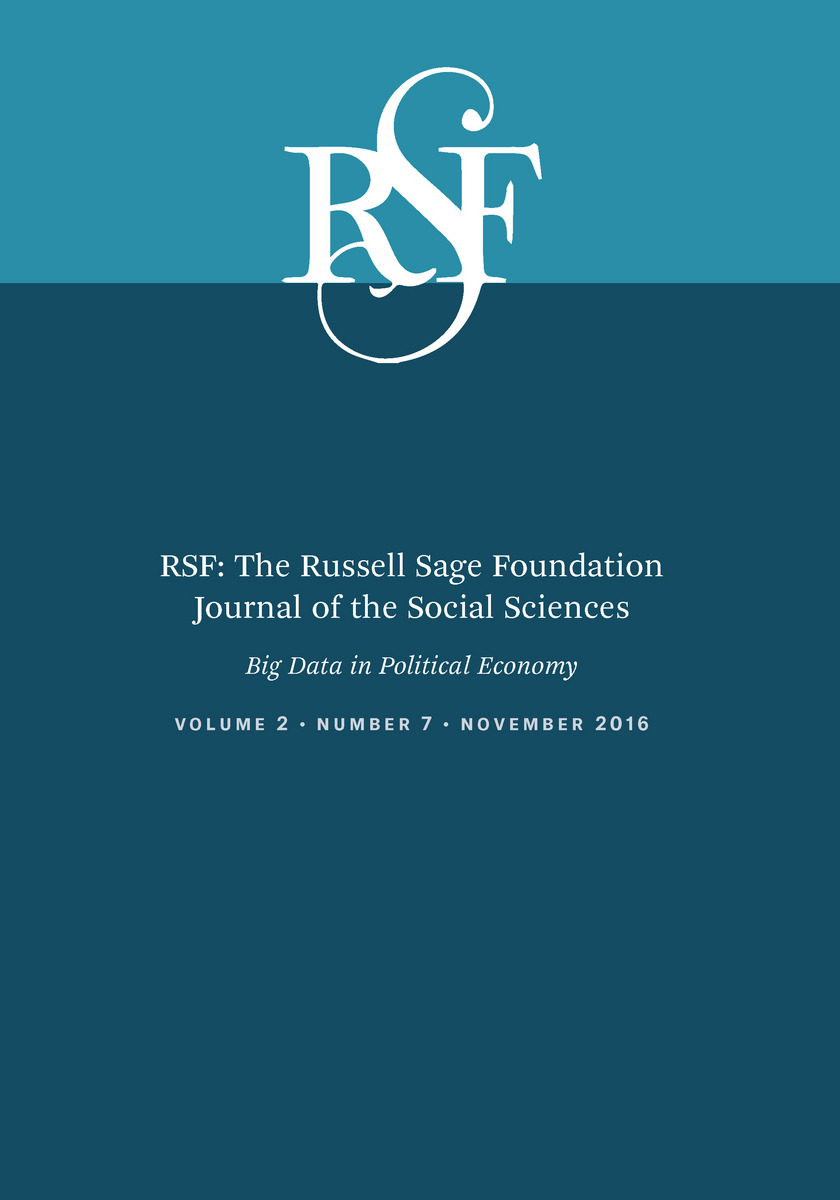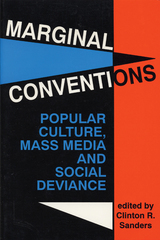RSF: The Russell Sage Foundation Journal of the Social Sciences: Big Data in Political Economy
Russell Sage Foundation, 2016
Paper: 978-0-87154-730-9
See other books on: Mian, Atif | Political Economy | Rosenthal, Howard | RSF | Russell Sage Foundation Journal
See other titles from Russell Sage Foundation
Paper: 978-0-87154-730-9
ABOUT THIS BOOK | AUTHOR BIOGRAPHY | TOC
ABOUT THIS BOOK
Rapid technological advances since the 1980s have revolutionized data gathering and changed the nature of many day-to-day transactions. Today, nearly every economic and financial transaction is recorded and can be linked to the individuals involved. This proliferation of “big data” makes it possible for economists and political scientists to empirically analyze the spending behavior of far greater numbers of individuals and firms, over much longer periods of time, than ever before. In “Big Data in Political Economy,” edited by Atif Mian and Howard Rosenthal, a group of quantitative researchers explore the possibilities and challenges of this data boom for the social sciences, focusing on how big data can help us gain new insights into such issues as social inequality, political polarization, and the influence of money in politics.
Among other topics, the articles in this issue demonstrate how large-scale data sources can be used to analyze campaign contributions and political participation. Adam Bonica outlines the development of a comprehensive “map” of the American political system that collects, processes, and organizes data on politicians’ campaign finances, policy positions, and voting records, and makes such information available to voters. Drew Dimmery and Andrew Peterson show how web-based data-gathering techniques can augment such a map to include political contributions made by nonprofits, which are often overlooked or not fully transparent. Deniz Igan links campaign contribution data to both policymakers’ voting records and financial institutions’ lending behavior and shows that legislators who were heavily lobbied by institutions engaging in risky lending, such as subprime lenders, were more likely to vote for deregulation. Chris Tausanovitch connects big data on voters’ income and policy preferences to the voting records of their congressional representatives in order to study how effectively the political system represents voters of different income levels. And Sharyn O’Halloran and coauthors discuss how big data can augment traditional observational research by replacing tedious hand coding of volumes of text with automated procedures.
As research in political economy increasingly focuses on the role of money in shaping the outcomes of elections and policymaking, new methods of aggregating and examining financial data have become central. Together, the papers in this volume show how big data provides unprecedented opportunities for social scientists to better understand the links between politics and markets.
Among other topics, the articles in this issue demonstrate how large-scale data sources can be used to analyze campaign contributions and political participation. Adam Bonica outlines the development of a comprehensive “map” of the American political system that collects, processes, and organizes data on politicians’ campaign finances, policy positions, and voting records, and makes such information available to voters. Drew Dimmery and Andrew Peterson show how web-based data-gathering techniques can augment such a map to include political contributions made by nonprofits, which are often overlooked or not fully transparent. Deniz Igan links campaign contribution data to both policymakers’ voting records and financial institutions’ lending behavior and shows that legislators who were heavily lobbied by institutions engaging in risky lending, such as subprime lenders, were more likely to vote for deregulation. Chris Tausanovitch connects big data on voters’ income and policy preferences to the voting records of their congressional representatives in order to study how effectively the political system represents voters of different income levels. And Sharyn O’Halloran and coauthors discuss how big data can augment traditional observational research by replacing tedious hand coding of volumes of text with automated procedures.
As research in political economy increasingly focuses on the role of money in shaping the outcomes of elections and policymaking, new methods of aggregating and examining financial data have become central. Together, the papers in this volume show how big data provides unprecedented opportunities for social scientists to better understand the links between politics and markets.
See other books on: Mian, Atif | Political Economy | Rosenthal, Howard | RSF | Russell Sage Foundation Journal
See other titles from Russell Sage Foundation












